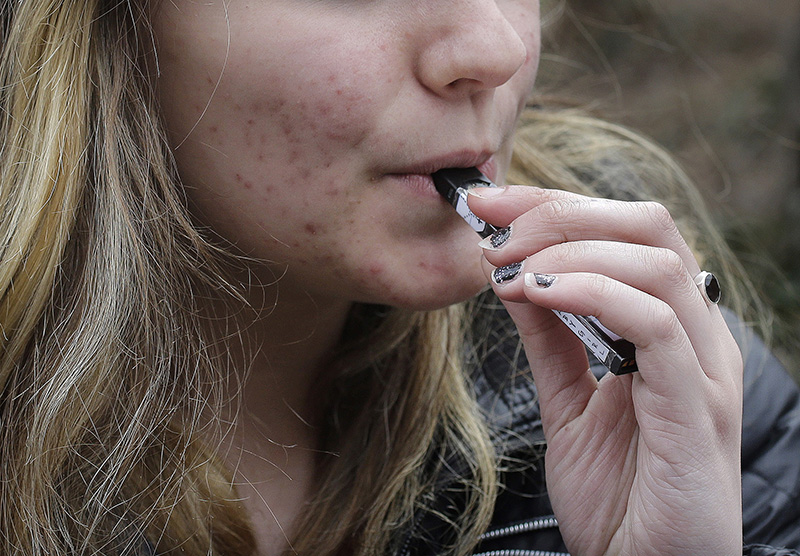Even when you think they’re down and out, old habits die hard.
Smoking rates in the U.S. have fallen steadily since the mid-1960s, and they continue to fall — reaching another all-time low this year.
But there is a threat to this public health success. Just as technology has disrupted news and retail, it is turning the smoking market upside down. And just as with Facebook and Amazon, promises of advancement through better circuitry are falling short.
E-cigarettes — sleek devices that heat up liquid nicotine — were supposed to be a healthier, tarless alternative for cigarette smokers. But they’ve found another market — teens drawn in by flavors, gadgetry and forbidden cool.
According to the Food and Drug Administration, the number of high school students who used e-cigarettes — vaping — jumped 78 percent this year, while the number increased 48 percent for middle-schoolers. It is estimated that 3.6 million teens now vape — 1 in 5 high-schoolers and 1 in 20 middle-schoolers, often with alarming regularity.
While less harmful than traditional smoking, vaping still contains addictive nicotine, and the discrete devices are increasingly being used in school bathrooms, even classrooms. The New York Times reported last year that a Cape Elizabeth student, after being caught vaping multiple times, told a vice principal, “I can’t stop.”
Teens who vape are going down a perilous road. Besides the indications that repeated use of the e-cigarette heating element could be harmful, a growing amount of evidence shows that teens who use e-cigarettes are more far more likely than others to try tobacco. For these students, e-cigarettes are not a way out of smoking, but a backdoor in.
Vaping, which has grown to a $6.6 billion industry, clearly needs more oversight, particularly when it comes to its exploitation of teens through marketing, and that has already started.
The FDA in November announced plans to ban the sale of flavored e-cigarettes in retail stores where teens are allowed. Last week, the U.S. surgeon general called for “aggressive steps” in stopping teen use.
First, lawmakers should follow the lead of Maine and a few other states and ban the sale of all smoking and tobacco products to people under the age of 21, cutting off a line of supply for high school students.
They should also explore other ways of limiting access, whether it be by further restricting mail delivery or by changing where the products can be sold.
There also needs to be additional research into the harm of e-cigarettes, so health professionals can be clear about the risks.
Smoking has declined over the last five decades, from 42 percent of adults in the early 60s to 14 percent last year. Still, smoking causes more than 480,000 deaths a year.
Old habits die hard, and even with only a little bit of life left, they can cause a lot of damage.
Send questions/comments to the editors.



Comments are no longer available on this story